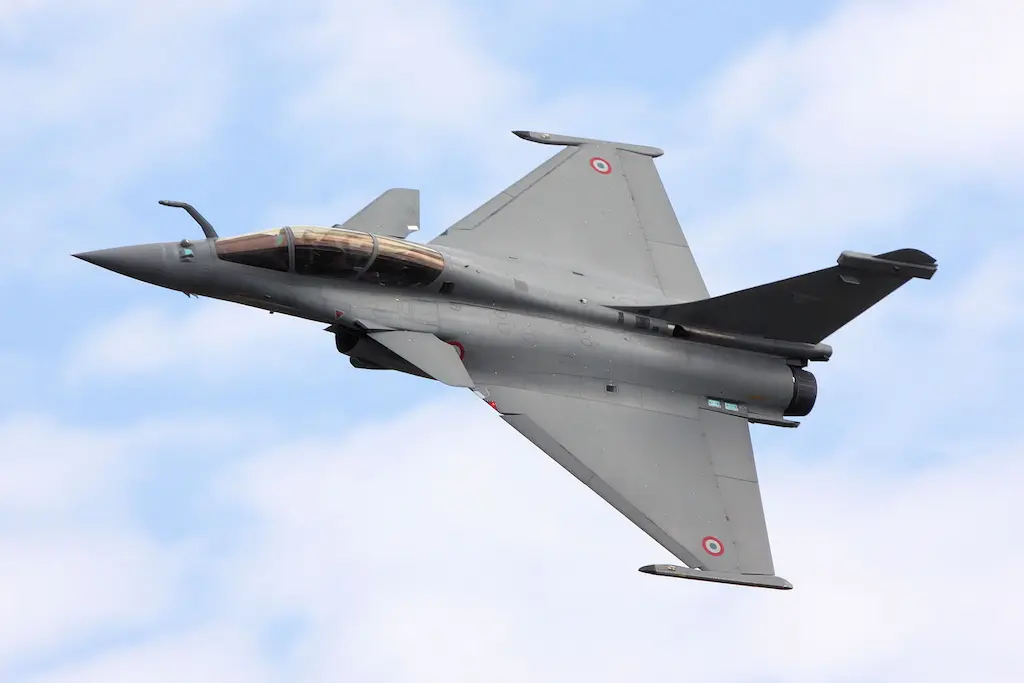
French intelligence reveals China’s covert campaign to sabotage Rafale fighter jet sales using embassies (photo-wikipedia)
Operation Sindoor: The Spark That Lit the Propaganda Fuse
Battle for the Skies – In May 2025, the skies over South Asia roared with tension as India launched Operation Sindoor, a precision military campaign targeting terror infrastructure in Pakistan. The operation, triggered by a deadly attack in Pahalgam, saw India deploy its most advanced aerial assets including the French-made Rafale fighter jets, in a tri-services offensive that stunned observers with its speed and coordination.
But while the dust settled on the battlefield, a new war was just beginning one fought not with missiles, but with memes, manipulated images, and misinformation. According to French intelligence, China seized the aftermath of Operation Sindoor as an opportunity to undermine the Rafale’s global reputation, launching a covert campaign to dissuade potential buyers and promote its own military hardware instead.
The stakes were high. Dassault Aviation, the Rafale’s manufacturer, had already secured deals with nations like Egypt, India, Indonesia, and the UAE. With 533 units sold globally, the Rafale was fast becoming a symbol of Western aerospace dominance in a region where China seeks to assert its own influence.
Beijing’s Playbook: Embassies, AI, and Digital Deception
French intelligence reports reveal that Chinese embassies worldwide were mobilized in a coordinated effort to cast doubt on the Rafale’s performance during Operation Sindoor. Defense attachés in countries like Indonesia—already a Rafale customer—were allegedly instructed to lobby against further purchases, citing unverified claims of combat losses and operational failures.
But the campaign didn’t stop at closed-door diplomacy. French cybersecurity researchers uncovered a surge of over 1,000 newly created social media accounts, many of which spread AI-generated content, doctored images of supposed Rafale wreckage, and even video game footage passed off as real combat scenes. The goal? To paint a picture of Chinese technological superiority and sow doubt among nations considering Western defense deals.
This digital offensive was part of a broader strategy to erode trust in Western defense systems while positioning Chinese alternatives—like the J-20 stealth fighter—as more reliable and cost-effective. Beijing, of course, denied all allegations, calling them “groundless rumours and slander” and reaffirming its commitment to “responsible military exports”.
Yet the timing and scale of the campaign suggest otherwise. French officials noted that the online disinformation surge coincided precisely with the Indo-Pak conflict, and that many of the narratives echoed talking points shared by Chinese diplomats in private meetings.
Strategic Fallout: What This Means for Global Defense and Diplomacy
The implications of China’s anti-Rafale campaign stretch far beyond a single aircraft. It signals a new era of hybrid warfare, where military outcomes are shaped as much by perception as by performance. In this world, disinformation becomes a weapon, and embassies double as influence outposts.
For France, the stakes are economic and strategic. Rafale exports are not just a source of revenue they’re a tool of soft power, helping Paris deepen ties with key partners in Asia, the Middle East, and Africa. Undermining the Rafale means undermining France’s global influence.
For India, the episode is a wake-up call. Operation Sindoor may have demonstrated military prowess, but it also exposed vulnerabilities in the information domain. As Lt. Gen. Rahul R. Singh noted, China used the conflict as a “live lab” to test its weapons and tactics both physical and digital.
And for the world, it’s a reminder that arms deals are no longer just about specs and price tags. They’re about narratives, alliances, and trust. In this new battlefield, truth is contested, and reputation is everything.
Stay updated with the latest news on Rapido Updates. Keep yourself updated with The World, India News, Entertainment, Market, Automobile, Gadgets, Sports, and many more